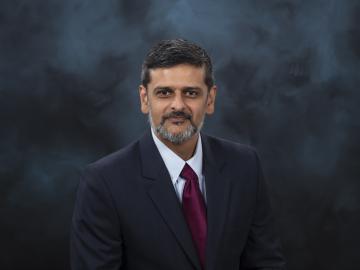
Filter News
Area of Research
- Advanced Manufacturing (4)
- Biology and Environment (18)
- Building Technologies (1)
- Clean Energy (75)
- Climate and Environmental Systems (1)
- Computational Engineering (2)
- Computer Science (12)
- Electricity and Smart Grid (1)
- Functional Materials for Energy (1)
- Fusion and Fission (3)
- Fusion Energy (2)
- Isotopes (2)
- Materials (49)
- Materials for Computing (10)
- Mathematics (1)
- National Security (8)
- Neutron Science (10)
- Nuclear Science and Technology (2)
- Quantum information Science (4)
- Supercomputing (31)
- Transportation Systems (2)
News Type
News Topics
- (-) Artificial Intelligence (29)
- (-) Composites (16)
- (-) Computer Science (70)
- (-) Microscopy (29)
- (-) Nanotechnology (30)
- (-) Polymers (19)
- (-) Security (10)
- (-) Space Exploration (11)
- (-) Transportation (61)
- 3-D Printing/Advanced Manufacturing (63)
- Advanced Reactors (20)
- Big Data (30)
- Bioenergy (39)
- Biology (47)
- Biomedical (26)
- Biotechnology (7)
- Buildings (39)
- Chemical Sciences (34)
- Clean Water (20)
- Climate Change (48)
- Coronavirus (21)
- Critical Materials (15)
- Cybersecurity (15)
- Decarbonization (31)
- Energy Storage (62)
- Environment (98)
- Exascale Computing (7)
- Fossil Energy (1)
- Frontier (7)
- Fusion (25)
- Grid (32)
- High-Performance Computing (32)
- Hydropower (8)
- Irradiation (3)
- Isotopes (27)
- ITER (5)
- Machine Learning (21)
- Materials (76)
- Materials Science (67)
- Mathematics (7)
- Mercury (7)
- Molten Salt (6)
- National Security (28)
- Net Zero (5)
- Neutron Science (51)
- Nuclear Energy (51)
- Partnerships (9)
- Physics (26)
- Quantum Computing (7)
- Quantum Science (16)
- Simulation (17)
- Software (1)
- Statistics (1)
- Summit (10)
- Sustainable Energy (70)
- Transformational Challenge Reactor (1)
Media Contacts

Three transportation researchers at the Department of Energy’s Oak Ridge National Laboratory have been elevated to senior member grade of the Institute of Electrical and Electronics Engineers, or IEEE.

In a game-changing study, ORNL scientists developed a deep learning model — a type of artificial intelligence that mimics human brain function — to analyze high-speed videos of plasma plumes during a process called pulsed laser deposition.

ORNL has partnered with Western Michigan University to advance intelligent road infrastructure through the development of new chip-enabled raised pavement markers. These innovative markers transmit lane-keeping information to passing vehicles, enhancing safety and enabling smarter driving in all weather conditions.

As a mechanical engineer in building envelope materials research at ORNL, Bryan Maldonado sees opportunities to apply his scientific expertise virtually everywhere he goes, from coast to coast. As an expert in understanding how complex systems operate, he’s using machine learning methods to control the process and ultimately optimize performance.

A research scientist with the Department of Energy’s Oak Ridge National Laboratory, Ayana Ghosh was named the 2024 Early Discovery Award winner by the American Ceramic Society. The award recognizes an early career member of the organization who has contributed to basic science in the field of glass and ceramics.

Debjani Singh, a senior scientist at ORNL, leads the HydroSource project, which enhances hydropower research by making water data more accessible and useful. With a background in water resources, data science, and earth science, Singh applies innovative tools like AI to advance research. Her career, shaped by her early exposure to science in India, focuses on bridging research with practical applications.

Brittany Rodriguez never imagined she would pursue a science career at a Department of Energy national laboratory. However, after some encouraging words from her mother, input from key mentors at the University of Texas Rio Grande Valley, or UTRGV, and a lot of hard work, Rodriguez landed at DOE’s Manufacturing Demonstration Facility, or MDF, at Oak Ridge National Laboratory.

Oak Ridge National Laboratory scientists have developed a method leveraging artificial intelligence to accelerate the identification of environmentally friendly solvents for industrial carbon capture, biomass processing, rechargeable batteries and other applications.

Bill Partridge, a recently retired distinguished researcher at the U.S. Department of Energy’s Oak Ridge National Laboratory, was recognized by DOE’s Vehicle Technologies Office, or VTO, for leading world-class research in transportation throughout his 25-year career.

Anuj J. Kapadia, who leads the Advanced Computing in Health Sciences Section at the Department of Energy’s Oak Ridge National Laboratory, was named a 2024 Fellow by the American Association of Physicists in Medicine.


